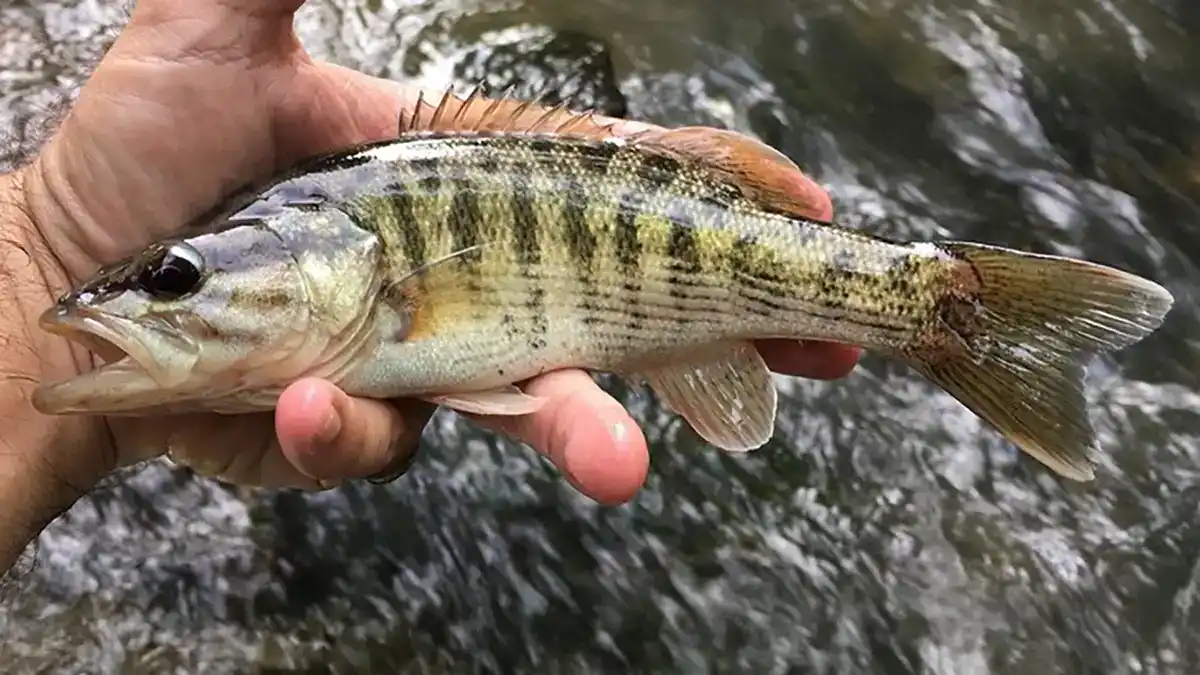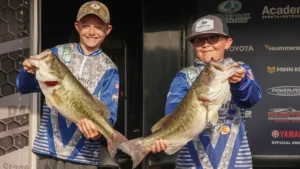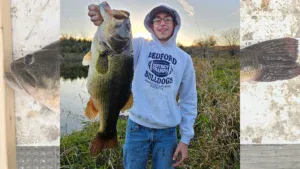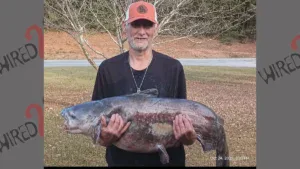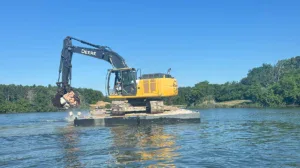For years astute anglers fishing the waters separating eastern Georgia with South Carolina noted that one of the “redeye” bass they were catching had a distinctively different body shape and color.
Most anglers simply lumped the different looking bass into the redeye bass category, which is significantly smaller on average than largemouth or even smallmouth bass.
Scientists from Clemson University, Georgia’s DNR and South Carolina’s DNR began surveying the region for the fish. After years of field work, DNA analysis confirms they are a unique and newly discovered type of redeye bass.
The fish is a light gold color on chunky flanks, with distinctive dark markings. Its fin tips can be a faint blush-rose color and it has a blotchy belly. Its red eyes have a black pupil with a gold ring around it. Its tongue also has a telltale oval-shaped tooth patch.

On the Fishes of North Carolina website, they describe Bartram’s unique characteristics: “Caudal fin lacks notable spotting and has a narrow pale lower margin; the second dorsal, caudal, and anal fins usually have some orange to yellow coloration on their outer portions. Restricted to the Savannah [River] basin with an introduced population in the Green River in Polk County (N.C.)”
Bartram’s bass are small but strong, with most fish under 14 inches in length. An 8-incher is a nice one. But anglers say they are tough fighting, particularly when caught in the swift rocky rivers of the region.
For over two decades anglers familiar with the fish called it “Bartram’s” bass, which now is its official scientific name. That’s in honor of the 1770s-era naturalist William Bartram. who explored the region where the bass lives.
The Augusta area in Northeast Georgia is prime Bartram bass country. The Tugaloo and Chattooga rivers hold fish, as well as lakes Hartwell and Russell, which are Savannah River impoundments.
North Carolina waters holding Bartram’s bass include the Horsepasture and Toxaway rivers.

Light-tackle anglers and fly-rodders have an affinity for Bartram bass, since they are most abundant and catchable in rocky, swift-flowing streams that feed the rivers and lakes named above. Riffle and pool angling for them is much like small stream trout fishing.
Bartram’s bass are ambush predators, holding around stream boulders and deadfalls, with the heads and tails of pools choice fish locations. They are swift and aggressive, and anglers often believe the fish are much larger on the line than they are in the hand.
